|
George Morland
TITLE: A Sportsman Setting Out
TECHNIQUE: Oil on canvas
SIGNATURE: signed and dated 1796, bottom right corner
DIMENSIONS: 880 x 118 mm
FRAME: Wooden, gesso moulded, gilded gold
TREATMENT: November 2008 β January 2009
CONDITION REPORT
SECONDARY SUPPORT
This is a 6 member mortise-and-tennon stretcher (W: 15m T: 86mm), 10 keys are present. The general condition is good. The stretcher may be a later addition, as the painting has been lined commercially.
The following inscriptions appear on the top left of stretcher:
βJames Bourlet & Sons, Ltd.,
Fine Art Packers, Frame Maker
C 23863
17 & 18, Nassau Street,
Mortimer Street, W.
Phone;- Museum 1817 & 7588β
A label reads β152βwhich is located next to the first label in the top left area.
Another label reads β60β which is located in the centre of the cross bar.
PRIMARY SUPPORT
The primary support is a medium-weight tabby weave canvas. It is a commercially prepared canvas, as the ground extends to the tacking margin. When viewed from the back, two patches are seen in the lower left area. The tacks are evenly placed with a 9.5mm spacing.
GROUND
The ground cream in colour and in a sound condition.
PAINT LAYER
The paint has been applied thinly in glazes with only a few areas of impasto in the highlights. Drying cracks are seen in the dark areas along the bottom, in the tree, horse and dogs.
VARNISH LAYER
The natural resin varnish layer is discoloured and a layer of surface dirt covers this. This is not the original varnish as the painting has been previously restored.
TREATMENT CARRIED OUT
Photographic record was taken and this was maintained throughout treatment.
Tests were carried out to remove the surface dirt and this was removed using the appropriately selected reagent.
Following tests including a safety margin-cleaning test, an organic solvent was selected to remove the discoloured varnish layer safely and effectively. Cleaning proceeded using a swab stick. Due to the medium in the paint, it was necessary to only thin the varnish in the darker areas.
An isolating brush conservation varnish was applied. Localized losses in the areas of the drying cracks were retouching and a final varnish applied.
The frame, both front and back were cleaned, small losses filled and coloured and the painting was secured using brass plates.
|
|
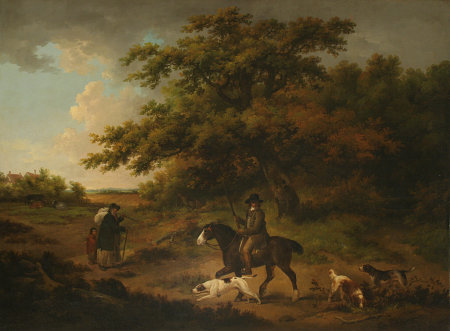
Whole front, before treatment
|
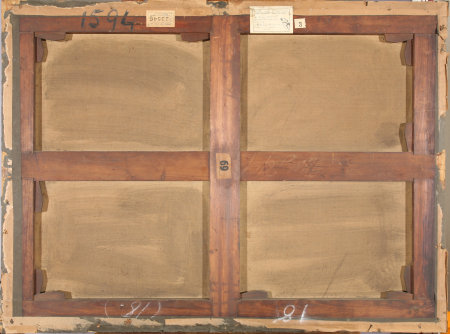
Whole back
|
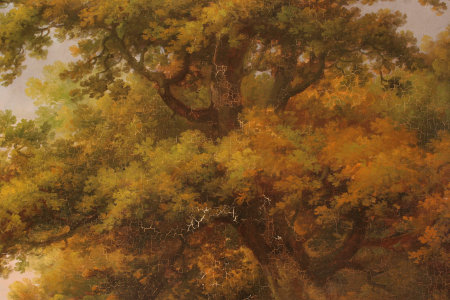
Detail of foliage and drying cracks, after cleaning
|
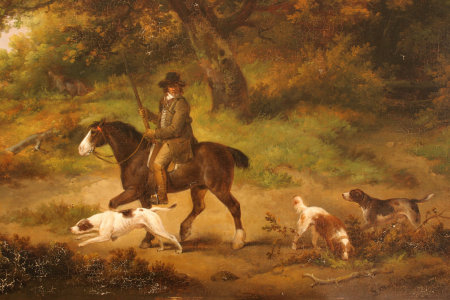
Detail of sportsman and dogs, after cleaning
|
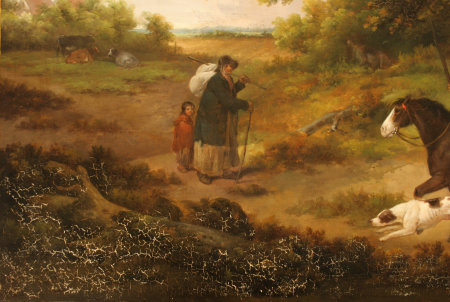
Detail of foreground and drying cracks, after cleaning
|
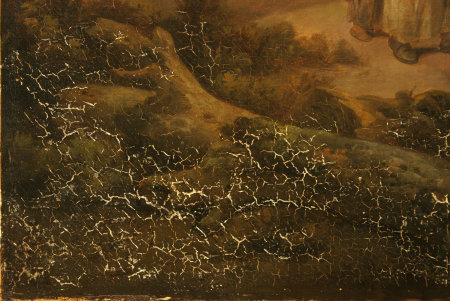
Detail of foreground and drying cracks, after cleaning
|
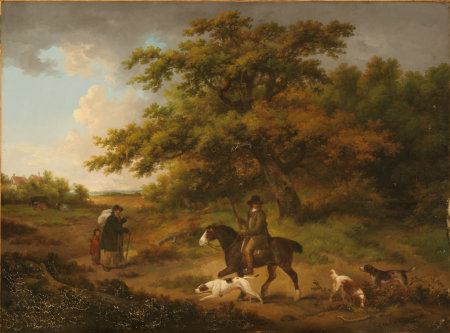
Whole front, after cleaning
|
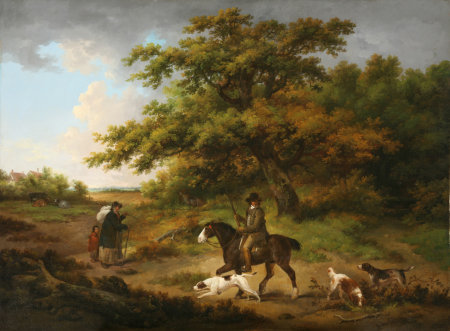
Whole front, after treatment
|
|








